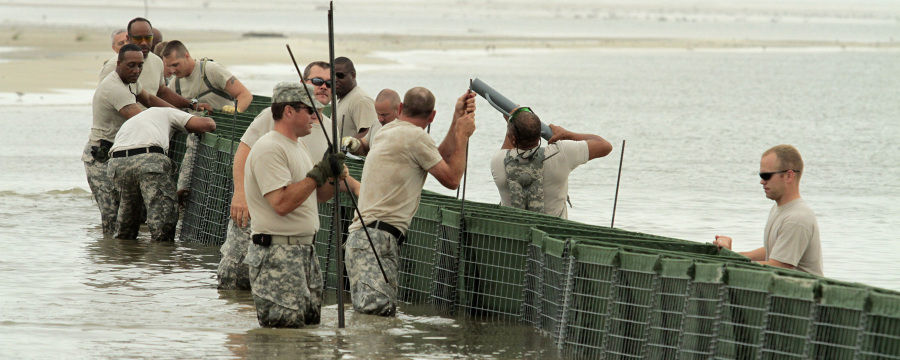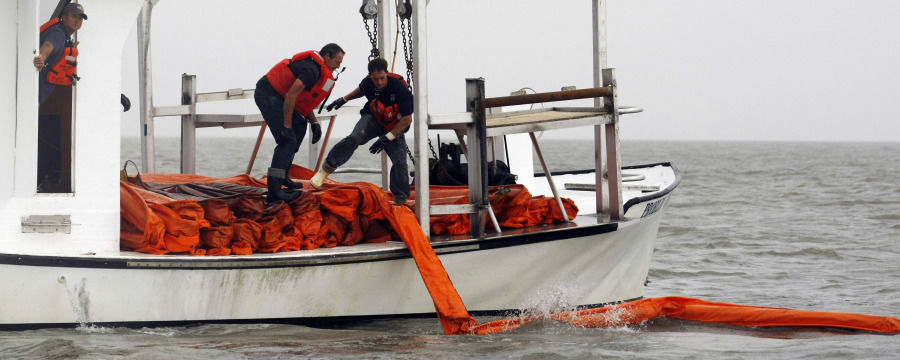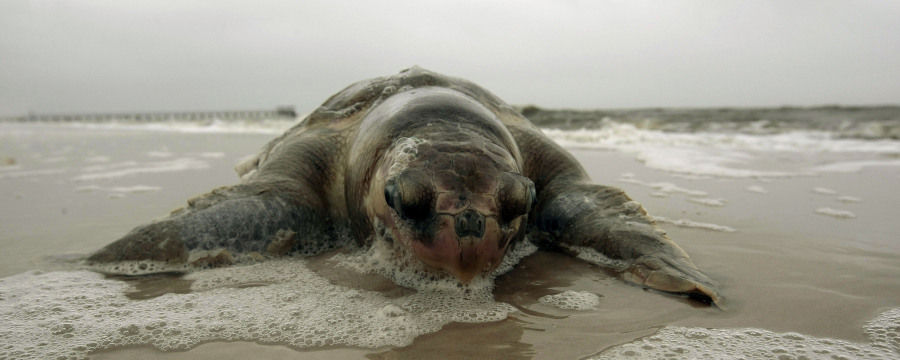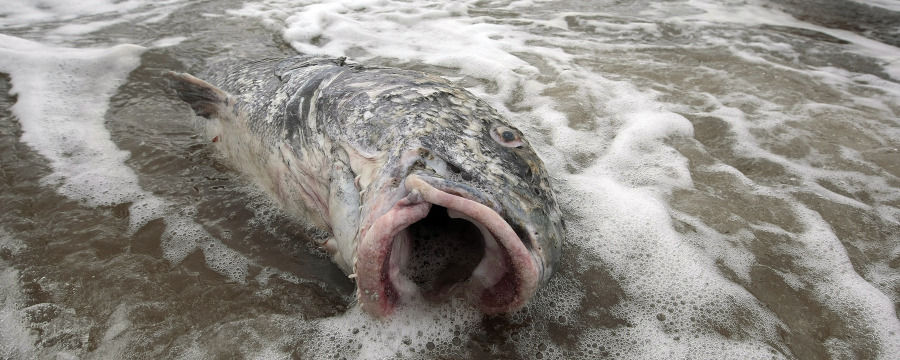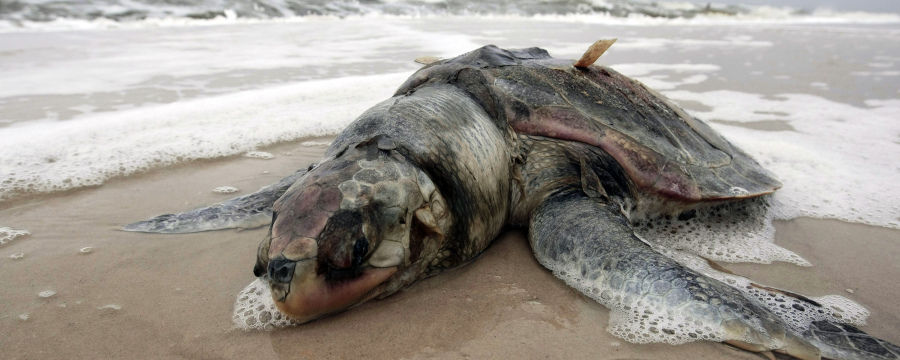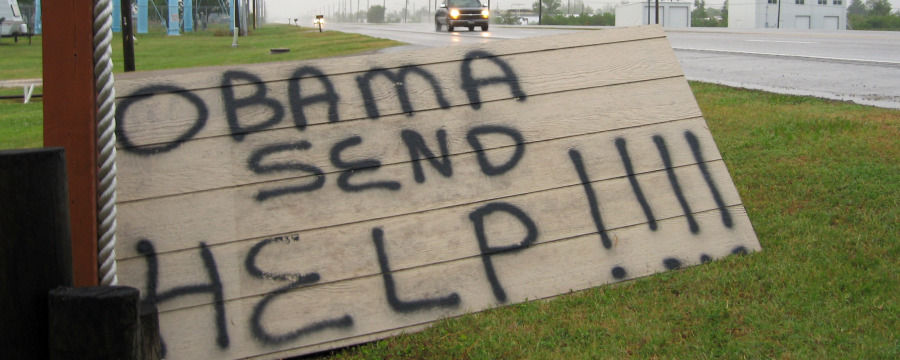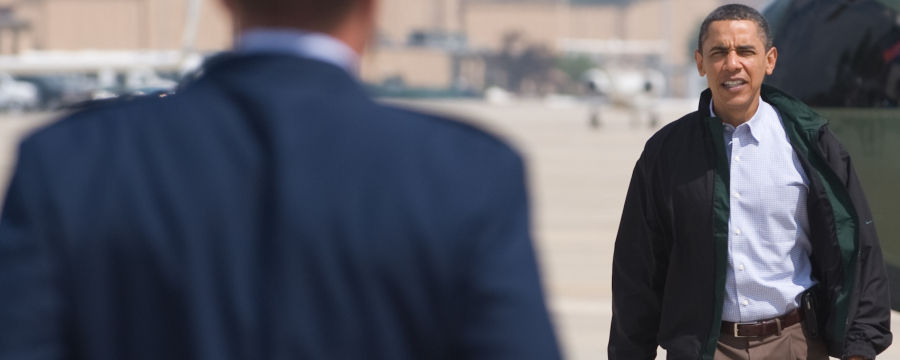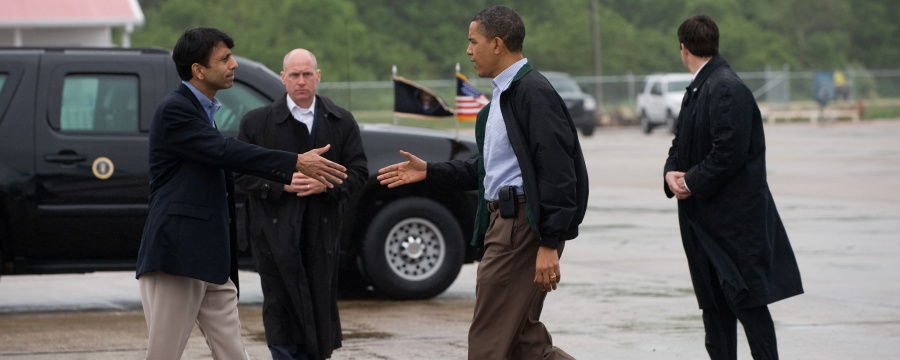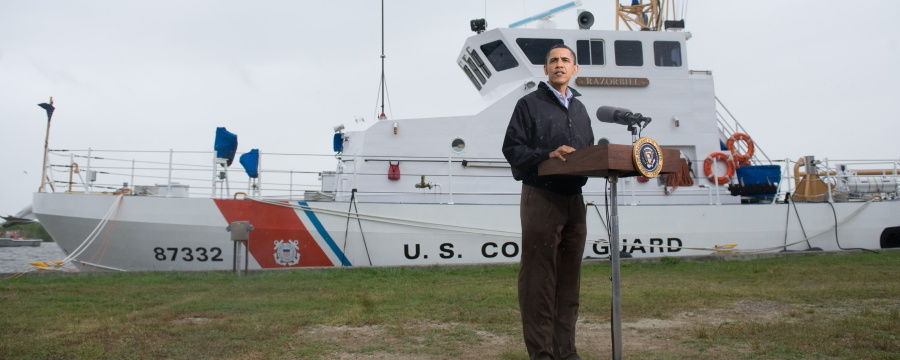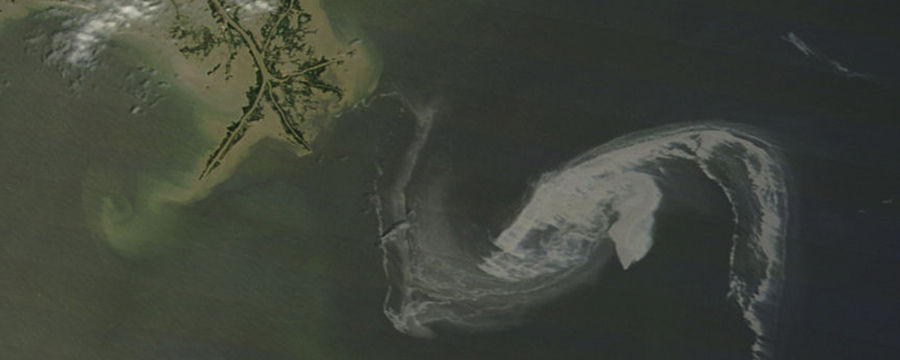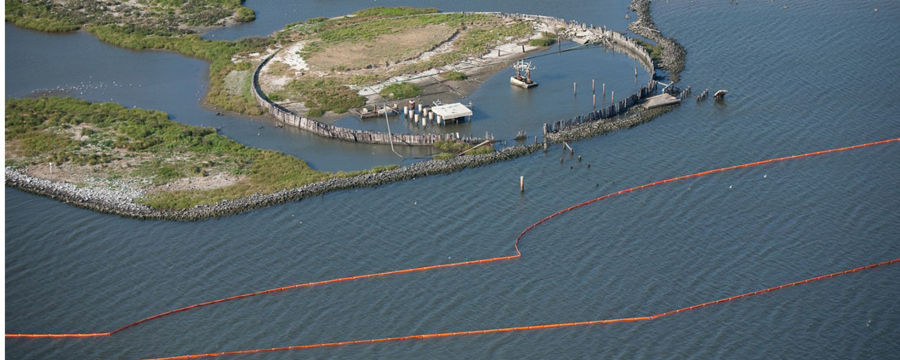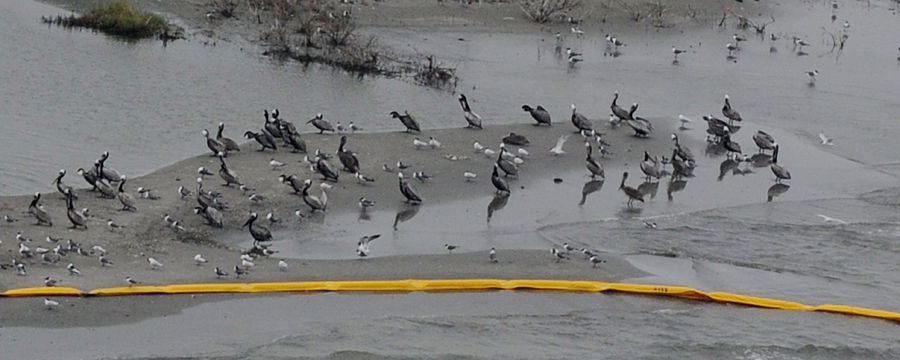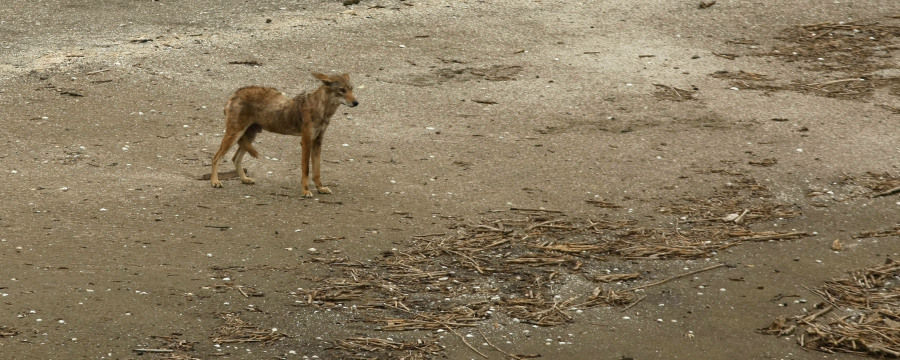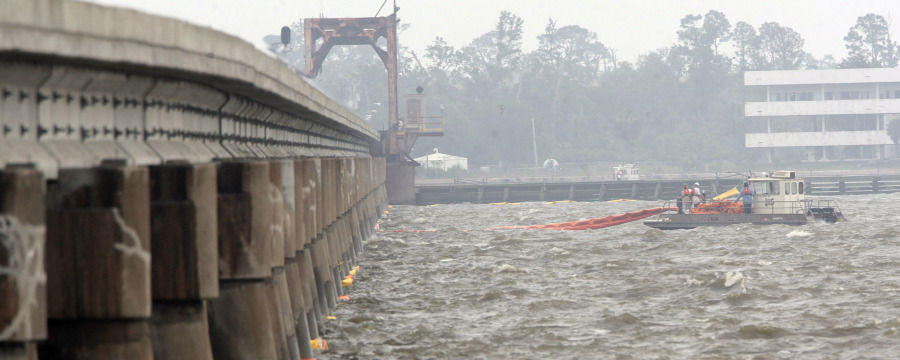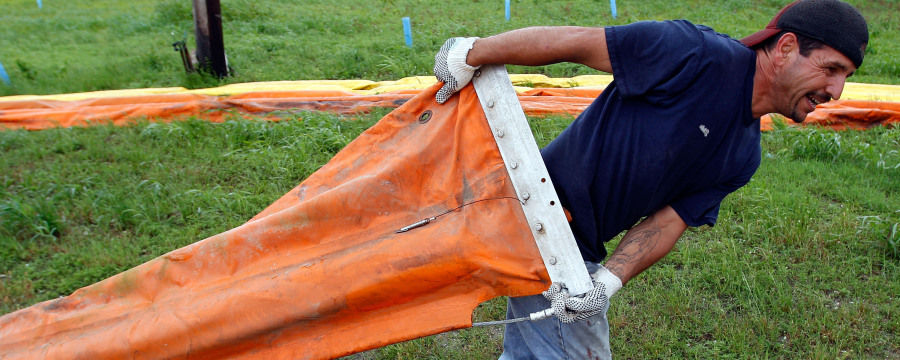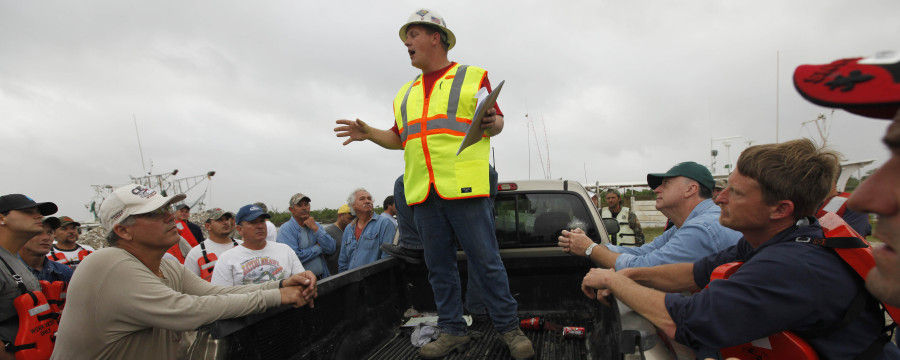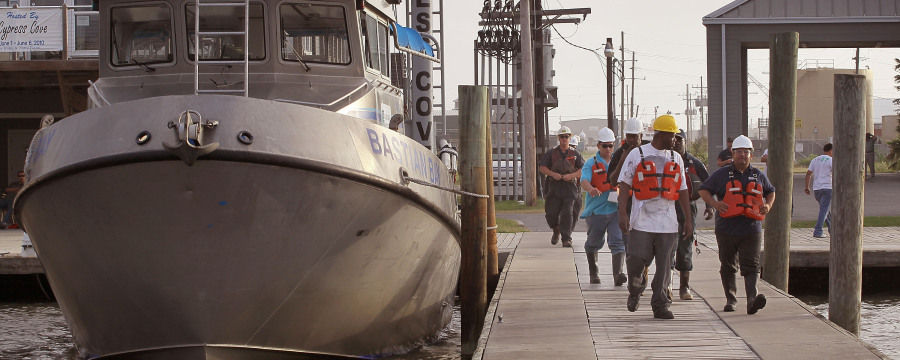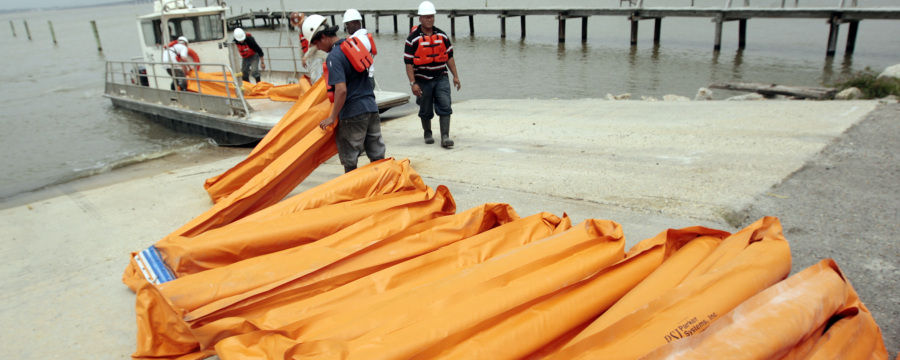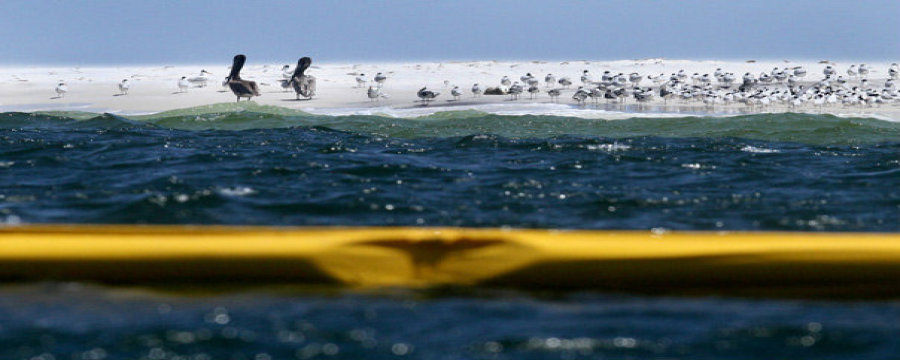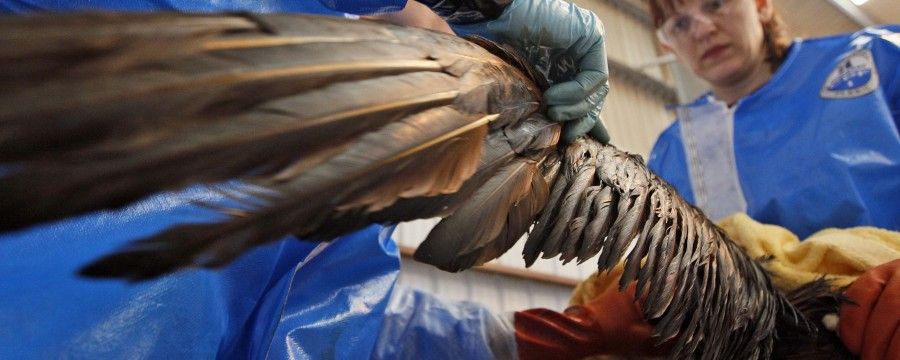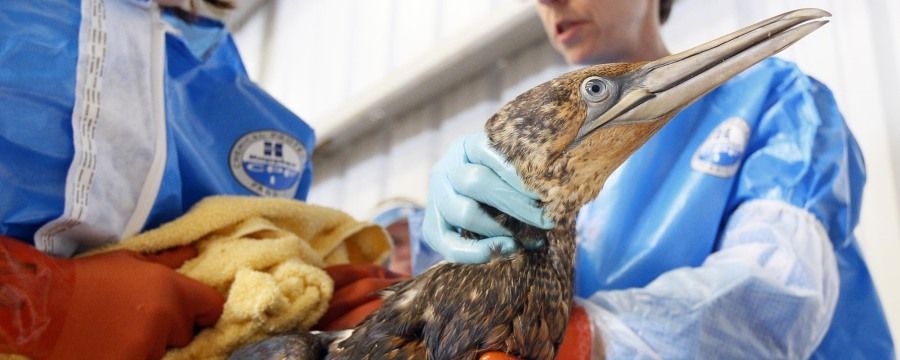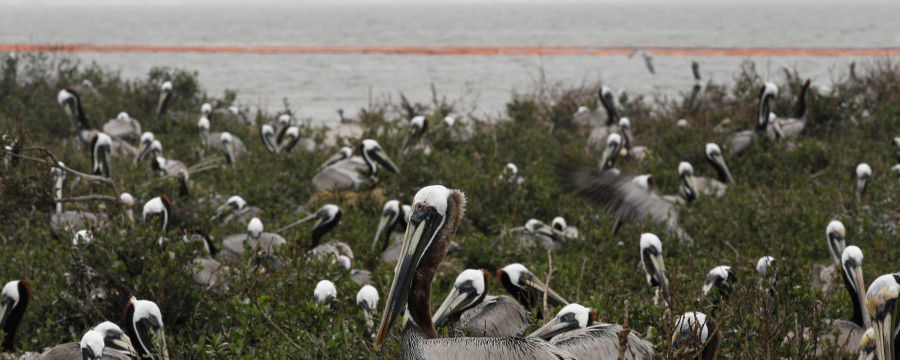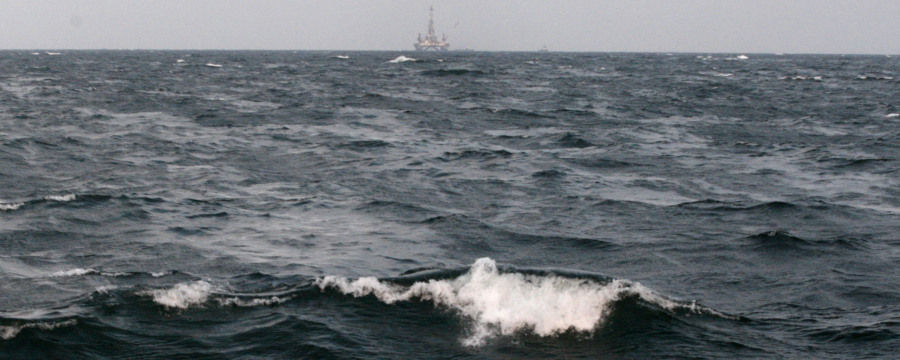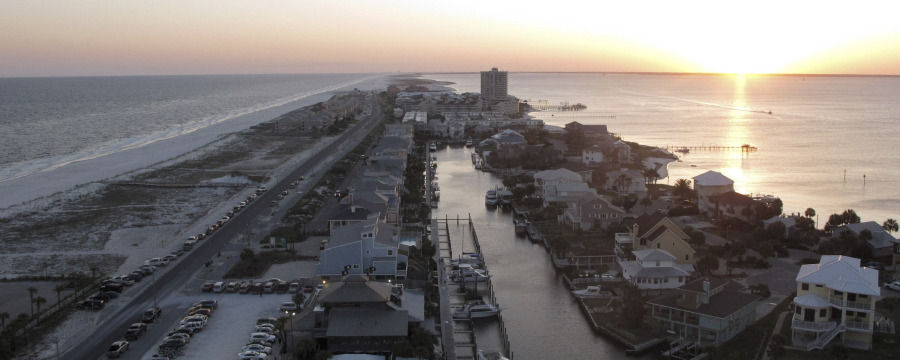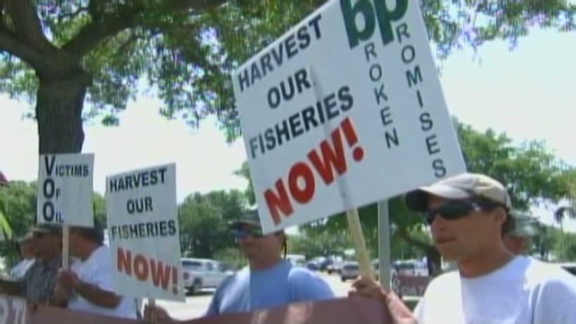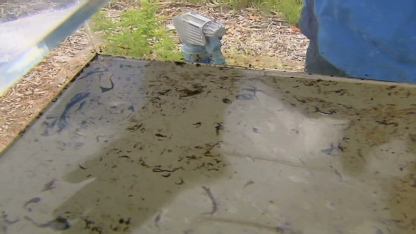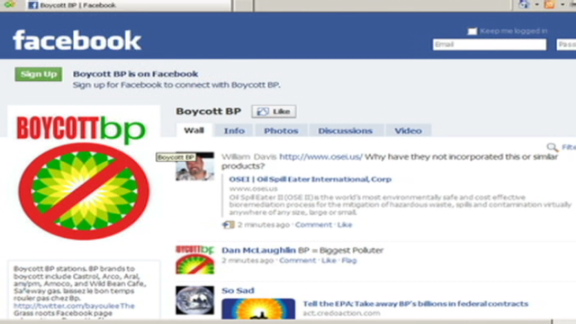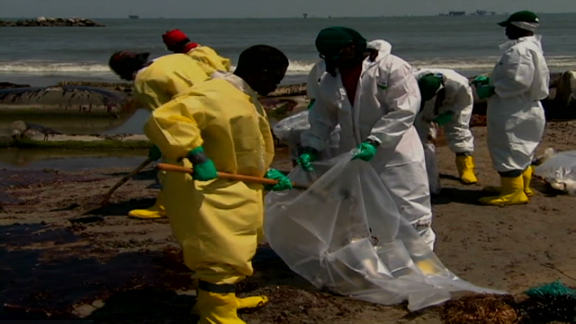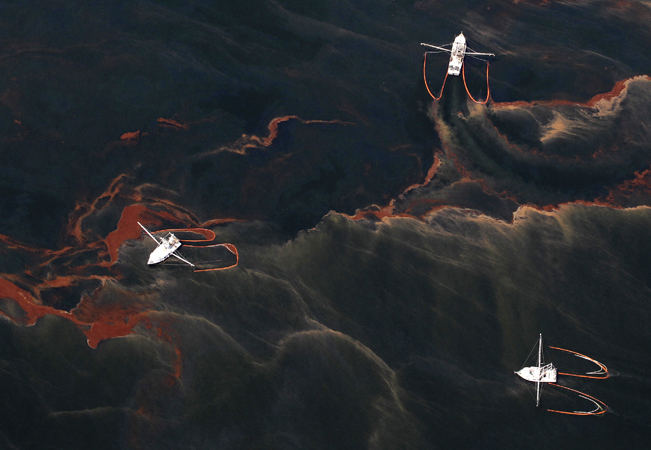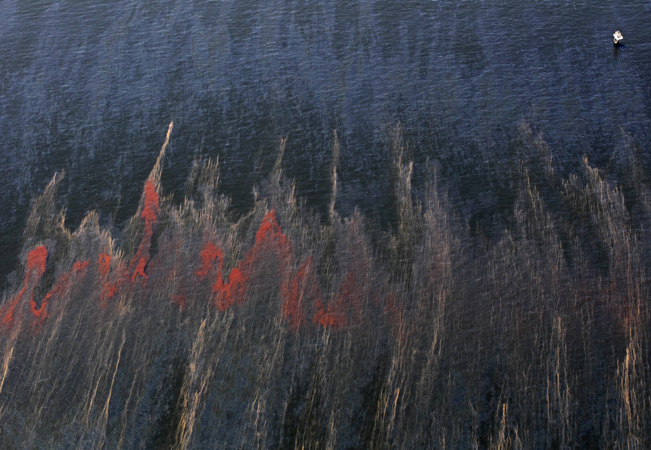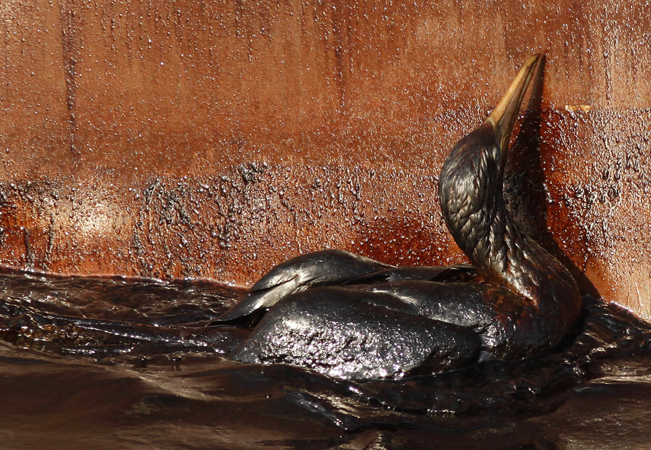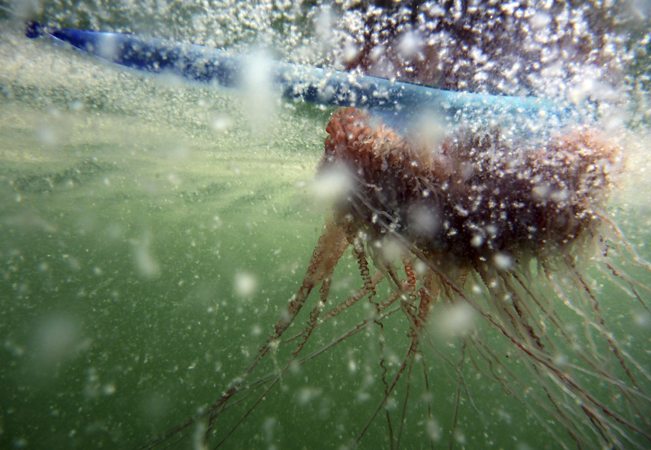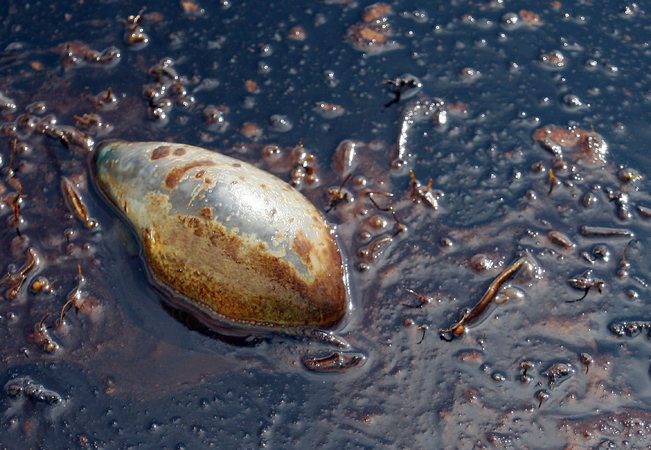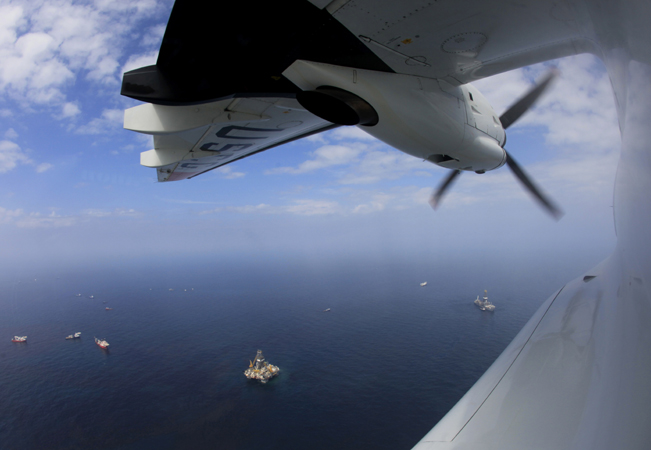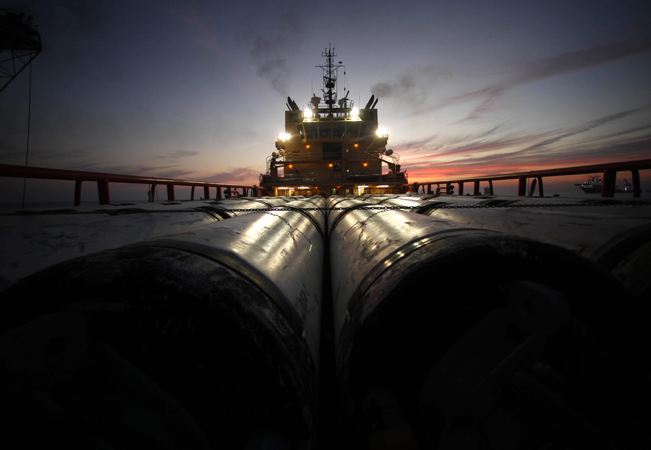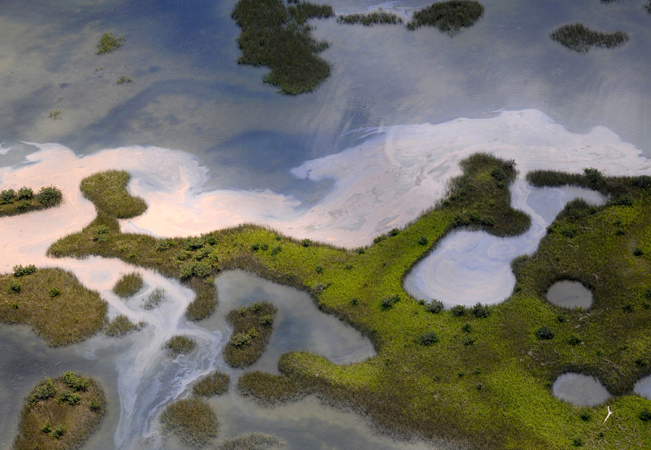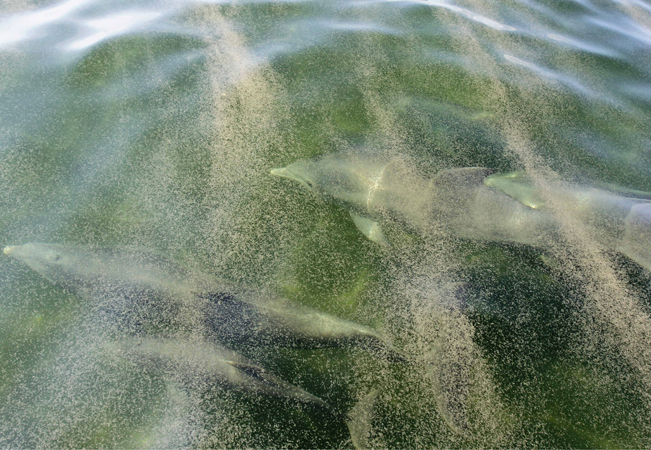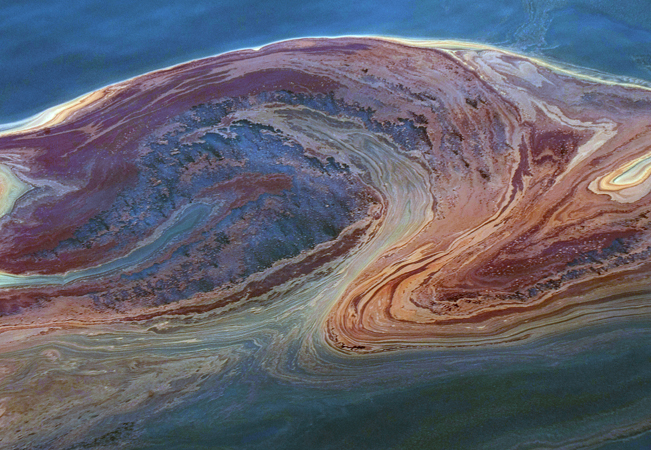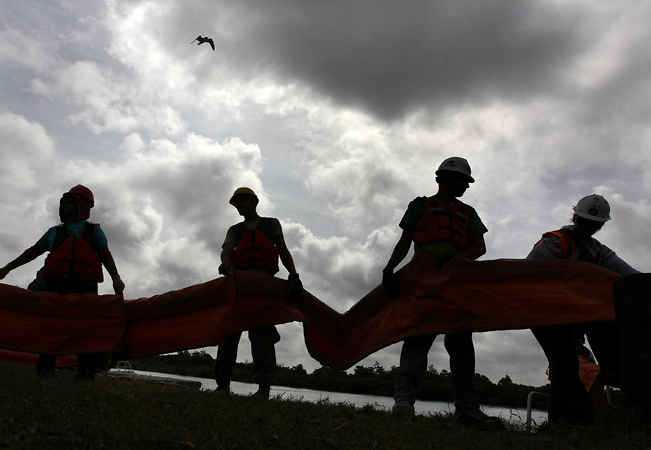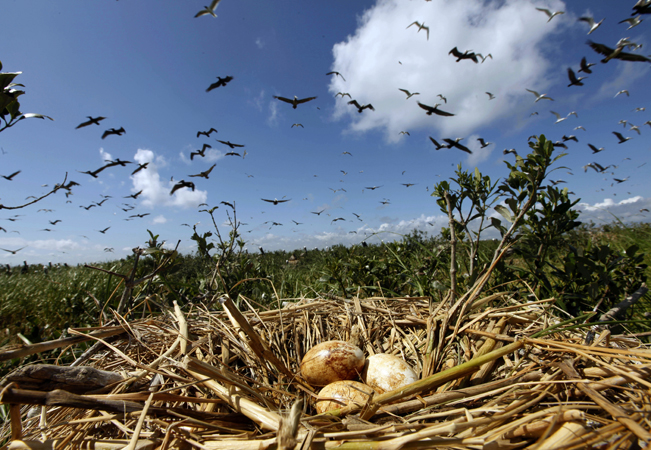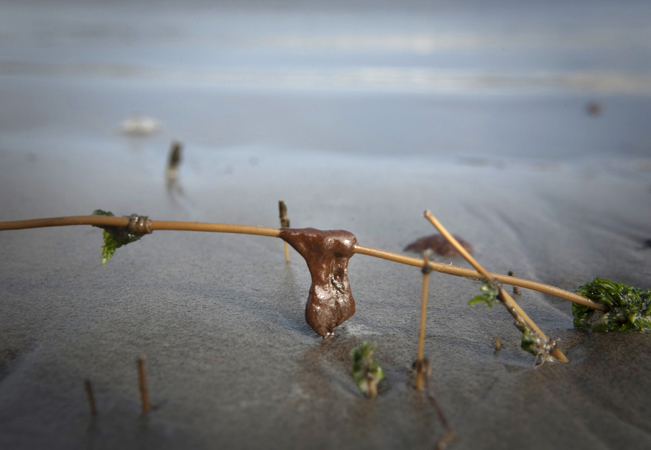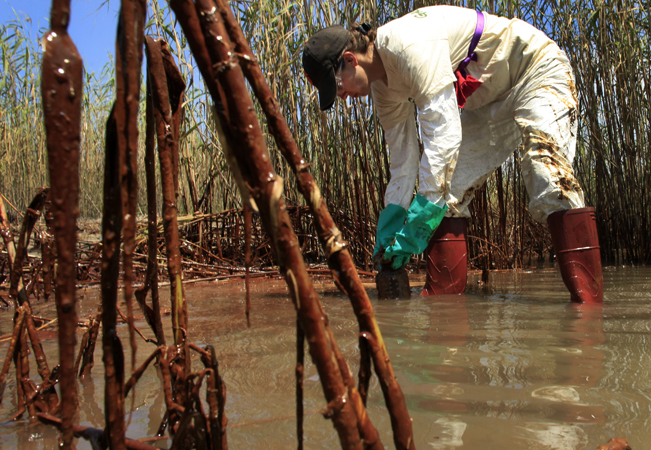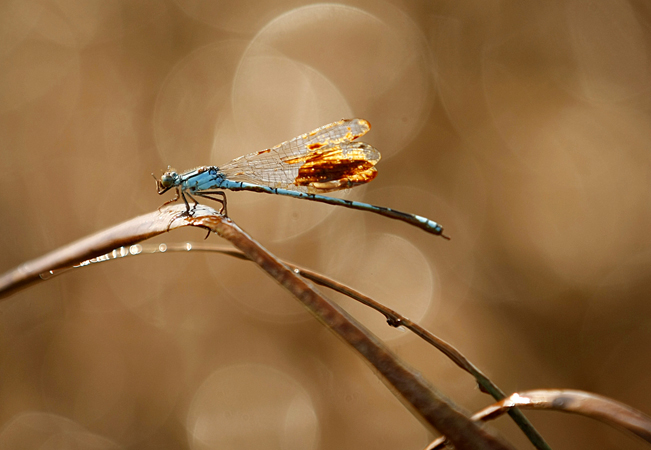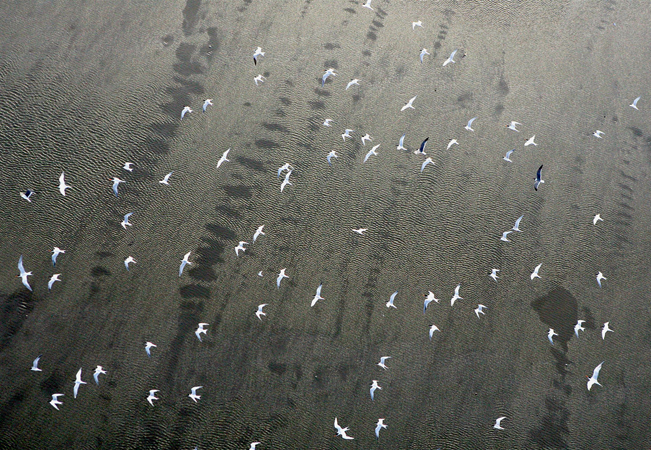Herbalist Dr MziziMkavu
JF-Expert Member
- Feb 3, 2009
- 42,316
- 33,125
By ROBERT BURNS and STEVEN R. HURST, Associated Press Writers
VENICE, La. – No remedy in sight, President Barack Obama on Sunday warned of a "massive and potentially unprecedented environmental disaster" as a badly damaged oil well a mile deep in the Gulf of Mexico spewed a widening and deadly slick toward delicate wetlands and wildlife. He said it could take many days to stop.
Obama rushed to southern Louisiana to inspect forces arrayed against the oil gusher as Cabinet members described the situation as grave and insisted the administration was doing everything it could. Then he took a helicopter ride over the water to view the 30-mile oil slick caused by as much as 210,000 gallons of crude gushing into the Gulf each day.
The spill threatens not only the environment but also the region's abundant fishing industry, which Obama called "the heartbeat of the region's economic life." As of now, it appeared little could be done in the short term to stem the oil flow, which was also drifting toward the beaches of neighboring Mississippi and farther east along the Florida Panhandle. Obama said the slick was 9 miles off the coast of southeastern Louisiana.
BP Chairman Lamar McKay raised faint hope that the spill might be stopped more quickly by lowering a hastily manufactured dome to the ruptured wellhead in the next six to eight days, containing the oil and then pumping it to the surface. Such a procedure has been used in some well blowouts but never at the mile-deep waters of this disaster.
The leaking well was not only an ecological disaster but a potential political hazard, as well, depending on how the public judges the Obama administration's response. In 2005, President George W. Bush stumbled in dealing with Hurricane Katrina in the Gulf and left the impression of a president distant from immense suffering. His presidency never recovered.
Obama vowed that his administration, while doing all it could to mitigate the disaster, would require well owner BP America to bear all costs. "Your government will do whatever it takes for as long as it takes to stop this crisis," he said.
"BP is responsible for this leak. BP will be paying the bill," Obama said after a Coast Guard briefing in Venice, a Gulf Coast community serving as a staging area for the response. He stood before cameras in a heavy rain, water dripping from his face.
The president also stopped to talk with six local fishermen and said the challenge is "How do we plug this hole?" After that, he said, protecting the estuaries would be the next priority.
"We're going to do everything in our power to protect our natural resources, compensate those who have been harmed, rebuild what has been damaged and help this region persevere like it has done so many times before," Obama said.
Arriving in New Orleans, the president shunned helicopter travel because of a threat of tornadoes and drove to Venice to tour a close-to-the-water staging area where the government and BP were trying to keep the slick from causing even more damage.
Homeland Security Secretary Janet Napolitano said any comparison between the ruptured BP oil well and Katrina was "a total mischaracterization" and that the government had taken an "all hands on deck" approach from the beginning.
Administration officials have been at pains to explain that Obama's late March decision to expand offshore oil exploration could be altered as a result of the spill and that stricter safety rules would doubtless be written into leases.
In reality, oil companies and the government lack the technology to prevent the damage from a well gushing masses of oil, killing wildlife and tainting a delicate ecosystem. The oil washing ashore could ruin the coastal fishing industry.
While the government has mobilized masses of equipment to scoop up, burn and block the oil from moving ashore, the tools to contain the ecological and economic damage washing toward the coast were akin to big-game hunting with a pellet gun.
Adm. Thad Allen, the Coast Guard commandant, said the volume of spewing oil could climb to 100,000 barrels a day in the event of a total wellhead failure, a much greater breach than is believed to exist now. He spoke to the obvious urgency of stopping the flow of crude.
"The difference between 1,000 and 5,000 barrels a day (original estimates), when you look at the potential discharge of 100,000, leads me to believe that there are a lot of inaccuracies associated with trying to estimate flow from a broken pipe at 5,000 feet," Allen said. "That's the reason it's so very, very important we focus on stopping this leak right away."
White House spokesman Robert Gibbs told reporters with the president that Obama was briefed on the spill for 50 minutes during the flight from Washington by homeland security and counterterrorism adviser John Brennan and energy adviser Carol Browner. Chief of staff Rahm Emanuel rounded out the presidential party.
Gibbs said Brennan and Browner went "through a series of scenarios," while Obama wanted to know "what was the latest on our first, our biggest priority, which is capping the well."
Interior Secretary Ken Salazar tried to assure Americans that BP, rather than taxpayers, would pay for what will likely become the nation's worst oil disaster.
The bill is going to be an extraordinary hit on BP's bottom line. The sea shore and the animals and fishermen who depend on them will pay, perhaps, an even heavier cost.
___
Hurst reported from Washington.
http://news.yahoo.com/s/ap/us_gulf_oil_spill_obama
VENICE, La. – No remedy in sight, President Barack Obama on Sunday warned of a "massive and potentially unprecedented environmental disaster" as a badly damaged oil well a mile deep in the Gulf of Mexico spewed a widening and deadly slick toward delicate wetlands and wildlife. He said it could take many days to stop.
Obama rushed to southern Louisiana to inspect forces arrayed against the oil gusher as Cabinet members described the situation as grave and insisted the administration was doing everything it could. Then he took a helicopter ride over the water to view the 30-mile oil slick caused by as much as 210,000 gallons of crude gushing into the Gulf each day.
The spill threatens not only the environment but also the region's abundant fishing industry, which Obama called "the heartbeat of the region's economic life." As of now, it appeared little could be done in the short term to stem the oil flow, which was also drifting toward the beaches of neighboring Mississippi and farther east along the Florida Panhandle. Obama said the slick was 9 miles off the coast of southeastern Louisiana.
BP Chairman Lamar McKay raised faint hope that the spill might be stopped more quickly by lowering a hastily manufactured dome to the ruptured wellhead in the next six to eight days, containing the oil and then pumping it to the surface. Such a procedure has been used in some well blowouts but never at the mile-deep waters of this disaster.
The leaking well was not only an ecological disaster but a potential political hazard, as well, depending on how the public judges the Obama administration's response. In 2005, President George W. Bush stumbled in dealing with Hurricane Katrina in the Gulf and left the impression of a president distant from immense suffering. His presidency never recovered.
Obama vowed that his administration, while doing all it could to mitigate the disaster, would require well owner BP America to bear all costs. "Your government will do whatever it takes for as long as it takes to stop this crisis," he said.
"BP is responsible for this leak. BP will be paying the bill," Obama said after a Coast Guard briefing in Venice, a Gulf Coast community serving as a staging area for the response. He stood before cameras in a heavy rain, water dripping from his face.
The president also stopped to talk with six local fishermen and said the challenge is "How do we plug this hole?" After that, he said, protecting the estuaries would be the next priority.
"We're going to do everything in our power to protect our natural resources, compensate those who have been harmed, rebuild what has been damaged and help this region persevere like it has done so many times before," Obama said.
Arriving in New Orleans, the president shunned helicopter travel because of a threat of tornadoes and drove to Venice to tour a close-to-the-water staging area where the government and BP were trying to keep the slick from causing even more damage.
Homeland Security Secretary Janet Napolitano said any comparison between the ruptured BP oil well and Katrina was "a total mischaracterization" and that the government had taken an "all hands on deck" approach from the beginning.
Administration officials have been at pains to explain that Obama's late March decision to expand offshore oil exploration could be altered as a result of the spill and that stricter safety rules would doubtless be written into leases.
In reality, oil companies and the government lack the technology to prevent the damage from a well gushing masses of oil, killing wildlife and tainting a delicate ecosystem. The oil washing ashore could ruin the coastal fishing industry.
While the government has mobilized masses of equipment to scoop up, burn and block the oil from moving ashore, the tools to contain the ecological and economic damage washing toward the coast were akin to big-game hunting with a pellet gun.
Adm. Thad Allen, the Coast Guard commandant, said the volume of spewing oil could climb to 100,000 barrels a day in the event of a total wellhead failure, a much greater breach than is believed to exist now. He spoke to the obvious urgency of stopping the flow of crude.
"The difference between 1,000 and 5,000 barrels a day (original estimates), when you look at the potential discharge of 100,000, leads me to believe that there are a lot of inaccuracies associated with trying to estimate flow from a broken pipe at 5,000 feet," Allen said. "That's the reason it's so very, very important we focus on stopping this leak right away."
White House spokesman Robert Gibbs told reporters with the president that Obama was briefed on the spill for 50 minutes during the flight from Washington by homeland security and counterterrorism adviser John Brennan and energy adviser Carol Browner. Chief of staff Rahm Emanuel rounded out the presidential party.
Gibbs said Brennan and Browner went "through a series of scenarios," while Obama wanted to know "what was the latest on our first, our biggest priority, which is capping the well."
Interior Secretary Ken Salazar tried to assure Americans that BP, rather than taxpayers, would pay for what will likely become the nation's worst oil disaster.
The bill is going to be an extraordinary hit on BP's bottom line. The sea shore and the animals and fishermen who depend on them will pay, perhaps, an even heavier cost.
___
Hurst reported from Washington.
http://news.yahoo.com/s/ap/us_gulf_oil_spill_obama
